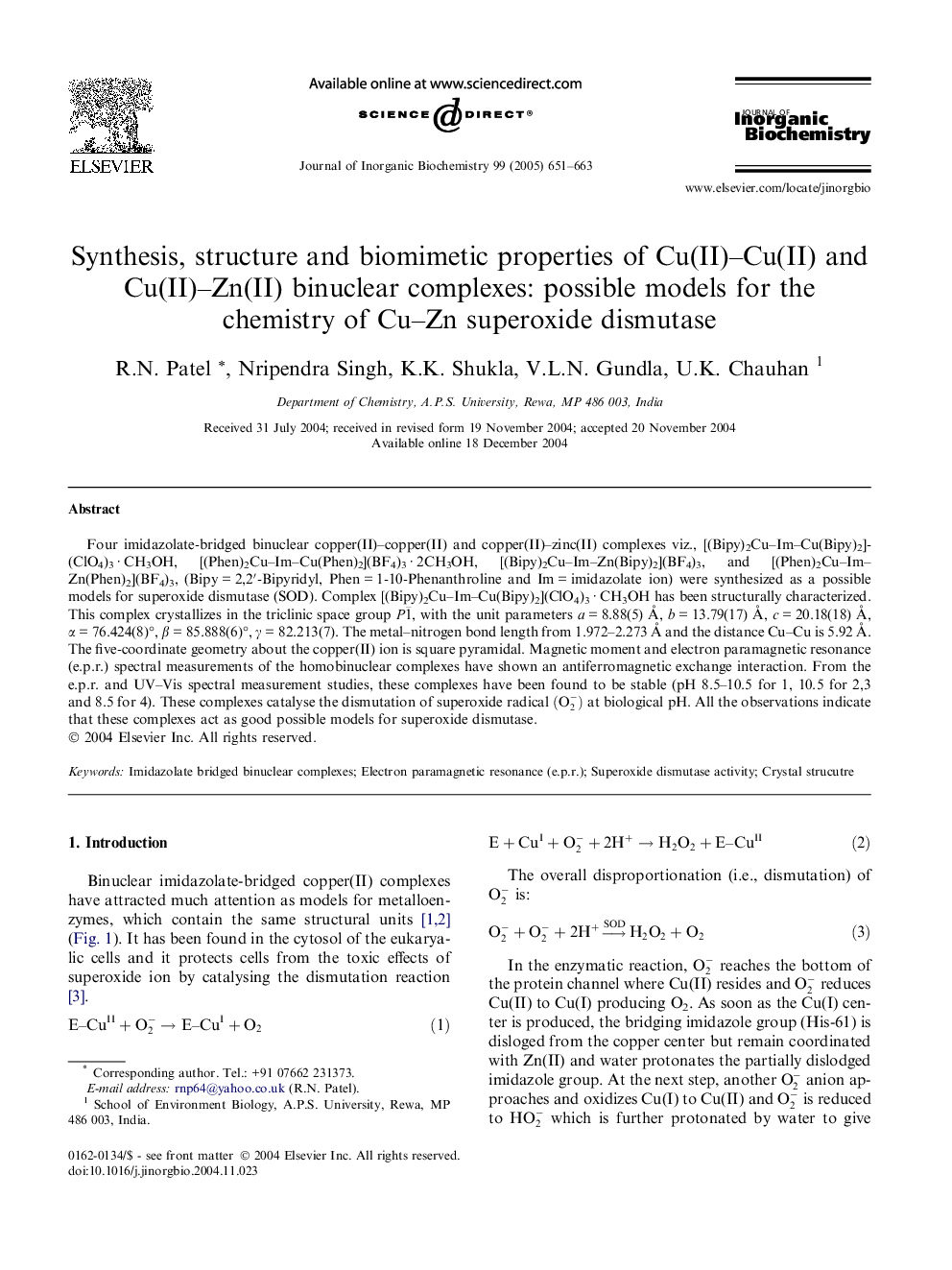| Article ID | Journal | Published Year | Pages | File Type |
|---|---|---|---|---|
| 10574959 | Journal of Inorganic Biochemistry | 2005 | 13 Pages |
Abstract
Four imidazolate-bridged binuclear copper(II)-copper(II) and copper(II)-zinc(II) complexes viz., [(Bipy)2Cu-Im-Cu(Bipy)2](ClO4)3 · CH3OH, [(Phen)2Cu-Im-Cu(Phen)2](BF4)3 · 2CH3OH, [(Bipy)2Cu-Im-Zn(Bipy)2](BF4)3, and [(Phen)2Cu-Im-Zn(Phen)2](BF4)3, (Bipy = 2,2â²-Bipyridyl, Phen = 1-10-Phenanthroline and Im = imidazolate ion) were synthesized as a possible models for superoxide dismutase (SOD). Complex [(Bipy)2Cu-Im-Cu(Bipy)2](ClO4)3 · CH3OH has been structurally characterized. This complex crystallizes in the triclinic space group P1¯, with the unit parameters a = 8.88(5) Ã
, b = 13.79(17) Ã
, c = 20.18(18) Ã
, α = 76.424(8)°, β = 85.888(6)°, γ = 82.213(7). The metal-nitrogen bond length from 1.972-2.273 Ã
and the distance Cu-Cu is 5.92 Ã
. The five-coordinate geometry about the copper(II) ion is square pyramidal. Magnetic moment and electron paramagnetic resonance (e.p.r.) spectral measurements of the homobinuclear complexes have shown an antiferromagnetic exchange interaction. From the e.p.r. and UV-Vis spectral measurement studies, these complexes have been found to be stable (pH 8.5-10.5 for 1, 10.5 for 2,3 and 8.5 for 4). These complexes catalyse the dismutation of superoxide radical (O2-) at biological pH. All the observations indicate that these complexes act as good possible models for superoxide dismutase.
Keywords
Related Topics
Physical Sciences and Engineering
Chemistry
Inorganic Chemistry
Authors
R.N. Patel, Nripendra Singh, K.K. Shukla, V.L.N. Gundla, U.K. Chauhan,
